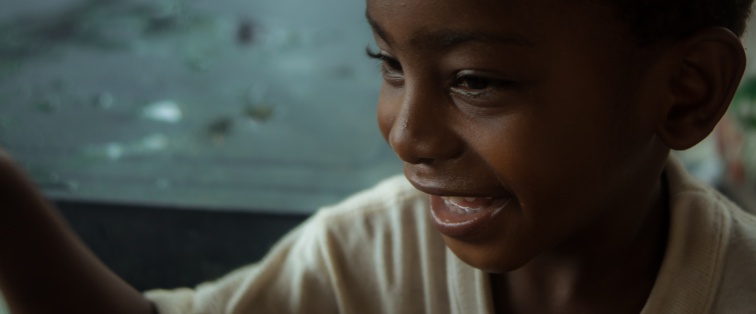What Can We Learn from Black & Brown Developing Nations’ Responses to COVID-19?

The reach of the COVID-19 pandemic is global. Countries all across the world are battling the virus to varying degrees. Yet, mostly, all eyes have been on the leadership response and mitigation strategies of the Unites States, Europe and Australia. This is in great contrast to the ways in which developing nations’ responses are viewed. Often if there’s any attention given to African nations’ responses to the pandemic, the focus is only on failures, and these unique countries are often treated as a single entity, ignoring their distinct leadership and approaches to virus containment.
For many in the world, our vision of expertise is one that automatically assumes it will come from (often white men in) Europe or the U.S. But the COVID-19 pandemic has given every nation on the planet something that is vital to skills development and knowledge formation: experience. Each country has now had experience in trying to combat this pandemic and to bolster their health care systems in this time of crisis.
There is a lot to learn from countries who devote great resources to public health infrastructure, as is often the case in developing countries. Because of the frailty of some countries’ tertiary direct patient care systems, public health has taken priority throughout the pandemic, and large-scale approaches to containment such as masking, movement restrictions, and contact tracing were seen as necessary to prevent the buckling, or even collapse, of health care systems. Countries like Botswana, with limited hospital beds and equipment like ventilators, could not afford to be crushed by a surge of sick people with COVID-19, so they, like Mongolia and Uruguay, took bold and swift steps to slow the movement of the virus even before they were faced with widespread community transmission.
Senegal has had one of the most successful anti-COVID-19 responses in the world. They credit their success, like most other countries successfully managing COVID-19, to a swift response that included many of the recommendations cited by PolicyLab experts and other leading public health agencies such as testing and tracing, mask mandates and border control. These measures were, and continue to be, dynamic with changes in the level of restrictions as case counts fluctuate. Senegal also prioritized clear and transparent communication to garner support for mask mandates and other activities like temperature scanning at every shop.
Botswana, Bhutan, and Mongolia have also been relatively successful at mitigating the spread of coronavirus in their countries by responding early to the warnings and recommendations of the World Health Organization. These mitigation strategies allowed schools to reopen safely. Following a nationwide lock down, Botswana was able to implement a return to school on a graduated basis that prioritized pupils with high-priority exams. When local transmission was low enough, all students were back in school, wearing masks, with half day, socially distant schedules. Now, amid a second surge, another graduated return to school plan is in place with several grades returning to in-person learning and others awaiting a lull in cases.
Rwanda also utilized a graduated response to school openings, focusing on high-priority grades based on exams. They tested thousands of students to get their own data on the likelihood of school spread and have been able to keep schools open during this second surge, even extending the school calendar to make up for some of the lost time. Students’ in-person education has been treated as high priority due in no small part to the limits of internet access and capacity for remote teaching. As many communities stateside struggle with limited internet access and remote learning, there is value in learning from these nations’ responses to similar challenges.
While success stories can be fleeting, as we have seen in many parts of the world, any system that is able to effectively slow the spread of the pandemic should be seen as a case study. There is precedent for regions to share their methods and teach those in other parts of the world something about containment and mitigation, and lower-income countries are no different. But this is not a one-way street in which only countries with ample resources, such as the U.S. and U.K., provide answers to lower-income countries and developing health care systems. True respect and collaboration happen when we can find answers from each other regardless of wealth status or predominant racial identity.
Higher-income countries should listen, not to critique or improve, but to learn. To learn how to prevent health care system collapse, how to have a strong population-based public health care system. To learn how to function with relatively fewer resources per person during a global crisis and how to implement successful mass vaccination strategies.
Listening to our neighbors in Africa, South America, and lower-income parts of Asia also allows us to begin to undo some of the racism behind decades of erased expertise that comes from these countries. The media’s tendency to focus on the challenges and failures some countries have faced, without highlighting successes, adds to the anti-Black bias we already have against much of the Black diaspora’s expertise and contributes to systemic racism. Instead, a focus on these countries’ successes could teach us invaluable lessons about how to manage an unprecedented pandemic from the perspectives of institutions that have the fewest resources, while also beginning to undo some of the racism behind decades of distrust in the expertise of these countries.
Merrian Brooks, DO, MS, is an attending physician in the Division of Adolescent Medicine at Children’s Hospital of Philadelphia (CHOP). Merrian was a CHOP David Pincus Pediatric Global Health Fellow in Gaborone, Botswana through CHOP’s partnership with the University of Botswana and the Botswana Ministry of Health. She continues to do adolescent mental health research in Botswana in addition to her clinical duties.

